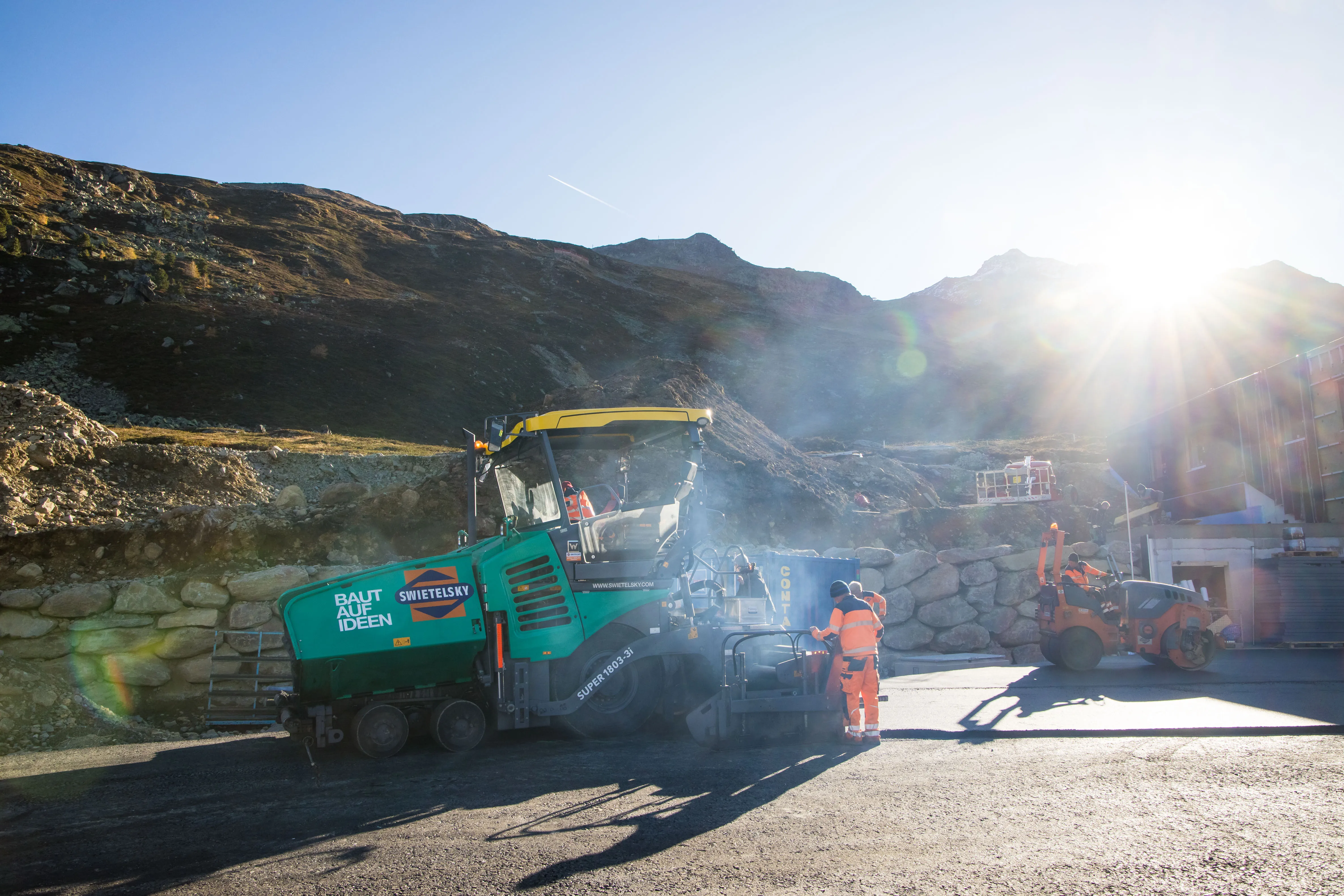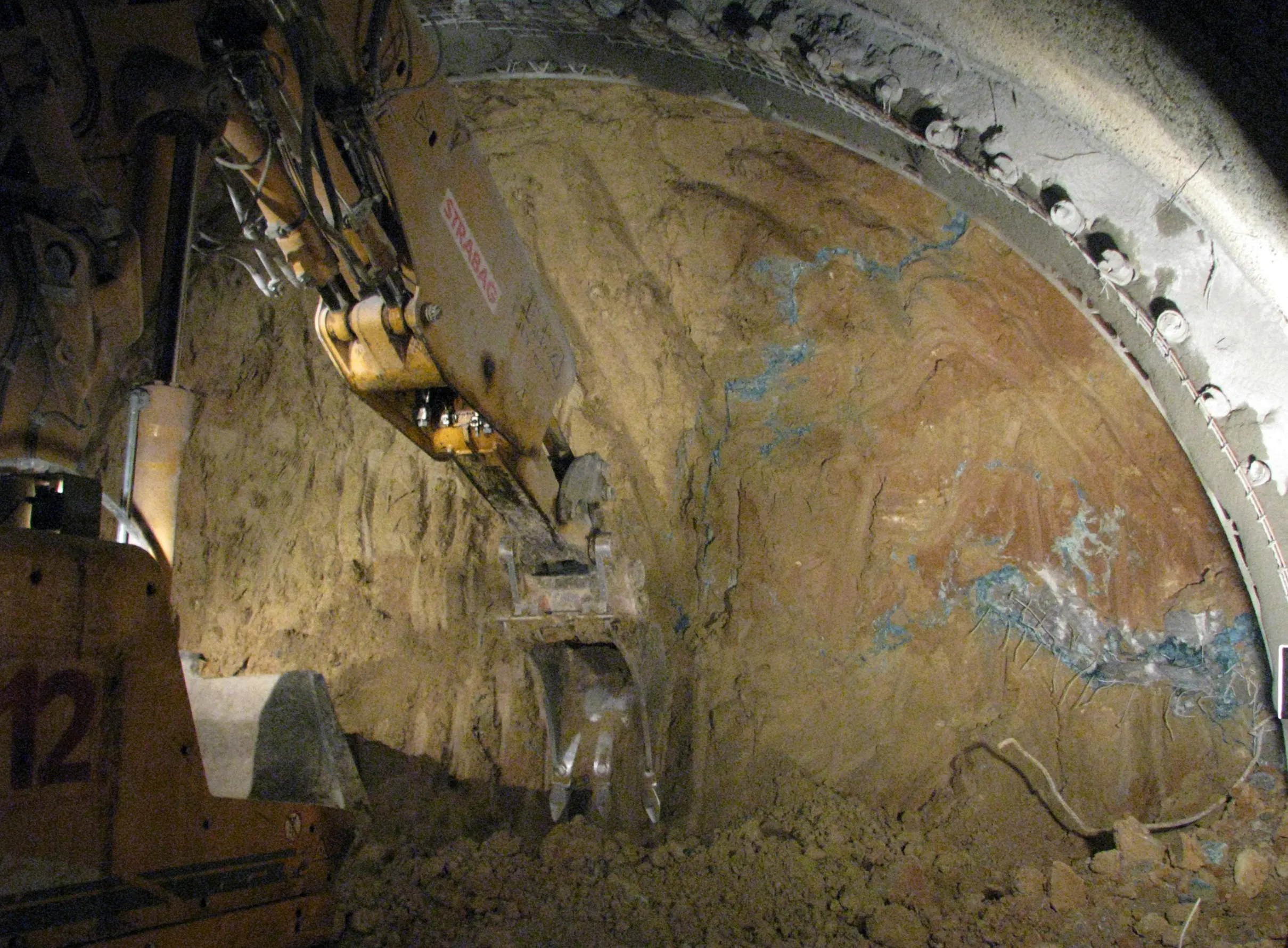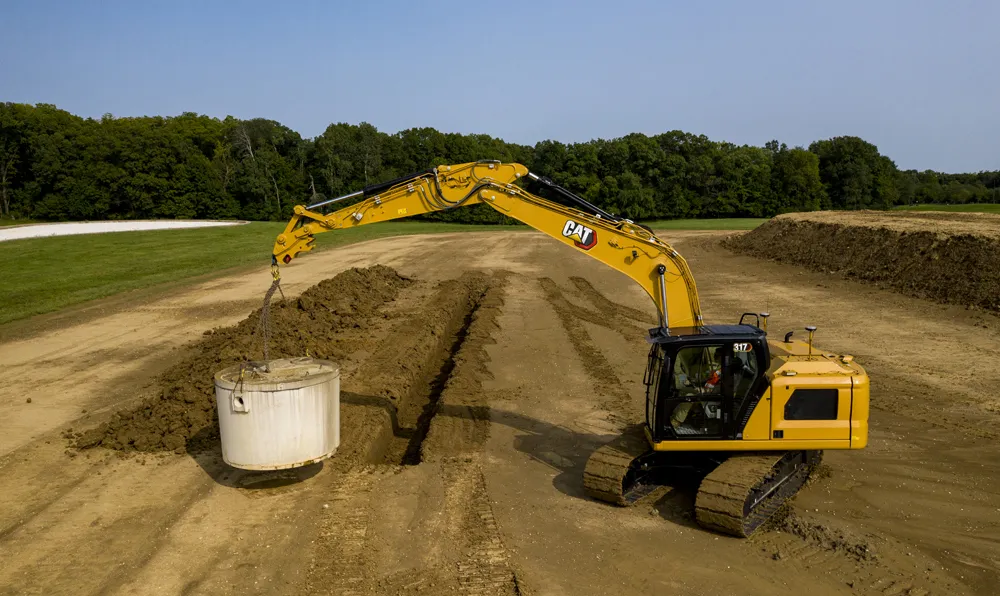Wacker Neuson’s smallest excavator, the 803 dual power, is punching above its weight on the Kocher Viaduct demolition project near Heilbronn in Germany.
The electric-hydraulic and diesel-powered mini-excavator can fully deploy its advantages with emission-free work in confined spaces on site where construction company Leonhard Weiss is reconstructing the viaduct.
At 185m, the Kocher viaduct is the highest bridge in Germany. Around 50,000 vehicles cross it daily. The Kocher viaduct was designed as a pr
May 1, 2015
Read time: 3 mins

Wacker Neuson’s smallest excavator, the 803 dual power, is punching above its weight on the Kocher Viaduct demolition project near Heilbronn in Germany.
The electric-hydraulic and diesel-powered mini-excavator can fully deploy its advantages with emission-free work in confined spaces on site where construction company Leonhard Weiss is reconstructing the viaduct.
At 185m, the Kocher viaduct is the highest bridge in Germany. Around 50,000 vehicles cross it daily. The Kocher viaduct was designed as a pre-stressed concrete box girder bridge. Demolition is being performed inside of the box girder of the 1,128m long bridge during the rehabilitation.
Since 2013m, the more than 35-year-old Kocher viaduct has been undergoing renovation which should end later this year. Work is taking place simultaneously at several of the project’s construction sites.
Leonhard Weiss Group bought the 803 specifically for the Kocher job, said Thomas Knapp,1651 Wacker Neuson’s sales manager for the German region of Stuttgart. "I knew that demolition work was planned from within the interior of the bridge and our excavator 803 dual power is ideal for such an application,” he said.
With the dual power option, the 803 mini-excavator can be connected to the external electro-hydraulic power unit HPU8. With the generator, the excavator is operated electrically and completely emission-free. The excavator with the dual power option meets all requirements for conventional compact diesel excavators, but in a few minutes it can be converted to a unit for emission-free work, without losing any machine performance or application flexibility. Dual power means the operator can drive it in conventional mode to the site of operation. Two openings are incorporated in the excavator's dozer blade in which the HPU8 generator can be secured for transport. The dimensions of the excavator and the generator are matched to each other so that the operator can easily drive through narrow door openings with the set.
Once arrived on site, the operator connects the HPU8 unit to the excavator's undercarriage and can then continue to work completely free of emissions.
The hydraulic supply for the excavator takes place via the undercarriage so that the pivot radius remains unrestricted over 360 degrees. The operating weight, stability and dimensions of the excavator have not changed with this option. Importantly for the operator, the sequence of operations remains completely unchanged after the connection of the generator.
The electric-hydraulic and diesel-powered mini-excavator can fully deploy its advantages with emission-free work in confined spaces on site where construction company Leonhard Weiss is reconstructing the viaduct.
At 185m, the Kocher viaduct is the highest bridge in Germany. Around 50,000 vehicles cross it daily. The Kocher viaduct was designed as a pre-stressed concrete box girder bridge. Demolition is being performed inside of the box girder of the 1,128m long bridge during the rehabilitation.
Since 2013m, the more than 35-year-old Kocher viaduct has been undergoing renovation which should end later this year. Work is taking place simultaneously at several of the project’s construction sites.
Leonhard Weiss Group bought the 803 specifically for the Kocher job, said Thomas Knapp,
With the dual power option, the 803 mini-excavator can be connected to the external electro-hydraulic power unit HPU8. With the generator, the excavator is operated electrically and completely emission-free. The excavator with the dual power option meets all requirements for conventional compact diesel excavators, but in a few minutes it can be converted to a unit for emission-free work, without losing any machine performance or application flexibility. Dual power means the operator can drive it in conventional mode to the site of operation. Two openings are incorporated in the excavator's dozer blade in which the HPU8 generator can be secured for transport. The dimensions of the excavator and the generator are matched to each other so that the operator can easily drive through narrow door openings with the set.
Once arrived on site, the operator connects the HPU8 unit to the excavator's undercarriage and can then continue to work completely free of emissions.
The hydraulic supply for the excavator takes place via the undercarriage so that the pivot radius remains unrestricted over 360 degrees. The operating weight, stability and dimensions of the excavator have not changed with this option. Importantly for the operator, the sequence of operations remains completely unchanged after the connection of the generator.









